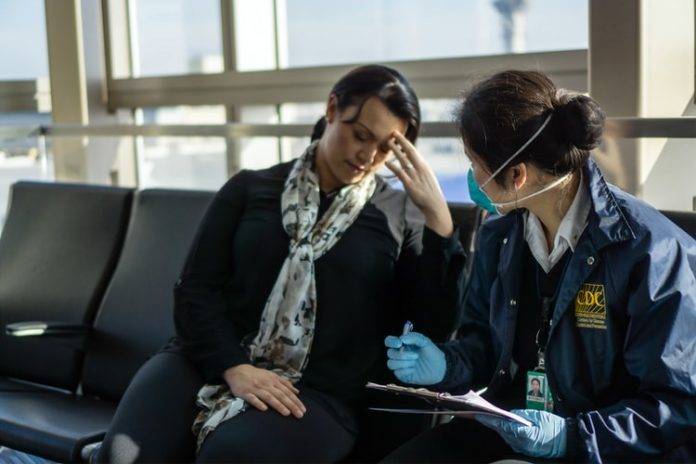COVID-19 has made a strong impact in every corner of the globe, effectively changing the course of history. Even as numerous countries and U.S. states kick off reopening procedures, life as we know it has been drastically altered. And it appears that some of the aftereffects of COVID-19 could prove more detrimental to society than the disease itself.
For example, the global economy was hit hard by social distancing mandates and shelter in place orders, causing some to defend the existence of a so-called new world order. Enacted as a means of curbing the spread of COVID-19, businesses not deemed “essential,” from nail salons to boutique clothing stores and taprooms, were shut down en masse.
In the COVID-19 fallout, unemployment numbers swelled virtually overnight. As of May 2020, more than 20 million Americans were unemployed, comprising roughly 13 percent of the national labor force. And that is only the beginning of the story: Experts remain skeptical that those who lost jobs in the wake of COVID-19 will ever get their jobs back.
And for those whose livelihoods were jeopardized by COVID-related business closures, lost wages are a catalyst for numerous other problems, such as housing instability. Further, it is important to note that marginalized populations are especially vulnerable when it comes to repercussions related to job loss. The Association of American Medical Colleges (AAMC) has connected poverty with increased suffering during times of crisis. Thus, COVID-19 offers a sobering look into poverty — as both a systemic and moral societal failure as well as a disease with significant consequences for individual health.
The Demographics of Essential Workers
For many American workers, their job is indeed “essential,” as a missed paycheck could mean that an eviction notice is pending or that the kitchen pantry remains bare. Workers who live on the edge of the poverty line during the best of times do not have the luxury of taking time off, even as a deadly virus spreads across the globe. And America’s frontline numbers reflect the trend of marginalized workers risking their health in exchange for a paycheck.
In regards to COVID-19, frontline industries include jobs in industries such as trucking, public transit, and grocery and convenience stores. More than 31 million essential workers are on the front lines of American businesses, and women represent the majority of these workers. In fact, 64.4 percent of frontline workers are female, and nearly a quarter survive on an income that is well below the poverty line. And the bulk of front line workers are clocking in every day despite the risks, whether or not they have health coverage.
Healthcare in a Post-COVID World
Technological advancements have greatly altered the healthcare industry, and global life expectancy rates are higher than ever. Unfortunately, healthcare access is not considered a universal human right, and the U.S. remains one of the last developed nations without a universal health care plan for its citizens. Thus, marginalized populations are left behind, unable to obtain adequate medical care.
For the nation’s African-American and Hispanic residents, poverty is the most common roadblock towards quality healthcare. Only about 9 percent of white residents live below the poverty line, compared to an estimated 24 percent of Black people and 21 percent of Hispanic residents. And where poverty and public health are concerned, inadequate medical care is just the beginning.
The sad truth is that poverty is directly connected to ill health and reduced life expectancy. In fact, research indicates that “socioeconomic status is one of the strongest predictors of illness and early death worldwide.” Several factors are included when assessing an individual’s socioeconomic status, including education, income, and employment opportunities.
And in these troubled times, opportunities may come from unlikely sources. Marginalized communities must roll with the changes stemming from social distancing measures. For many, the COVID-19 fallout could provide a lucrative side gig opportunity, or open up employment doors that were previously locked up tight.
Making Ends Meet in Troubled Times
On the surface, side hustles seem much like a modern concept, especially as we order take-out from the comfort of the living room sofa. Yet the side hustle has been an integral part of marginalized communities throughout history, and we have come a long way from the traveling bazaars along the ancient Silk Road.
Today, people from all walks of life have a seemingly endless array of lucrative side hustles to choose from. Those with string driving and social skills may dive into the world of ridesharing and delivery. Prospective entrepreneurs may find their niche in online sales, re-selling new, gently used and/or vintage items to buyers across the globe. Selling items online is one of the best side gig options for those who are immune-compromised but still need to make ends meet.
Of course, an internet connection and computer access are necessary parts of many modern gig opportunities, leaving marginalized populations at a disadvantage. Despite the ubiquitous nature of the internet and smartphones, an income-based tech divide still exists in America. Roughly 56 percent of low-income individuals have home internet access, compared to 94 percent of people with an annual income exceeding $100,000. That disparity has a huge impact on quality of life, including healthcare access and employment opportunities.
Key Takeaways
Poverty does not stand alone; it can wreak havoc on one’s psyche and body, negatively affecting mental and physical health. And in a world forever altered by COVID-19, the sad truth that a significant number of frontline workers lack access to quality, affordable healthcare. While it is unlikely that the pandemic will culminate in an anti-poverty revolution, it may ultimately serve as a catalyst for profound changes in the public health sector, on a global scale.
The views and opinions expressed in this article are those of the author.

The author is a creative professional with a lifetime of experience in service and care. As a manager, he’s learned a slew of tricks of the trade that he enjoys sharing with others who have the same passion and dedication that he brings to his work.


